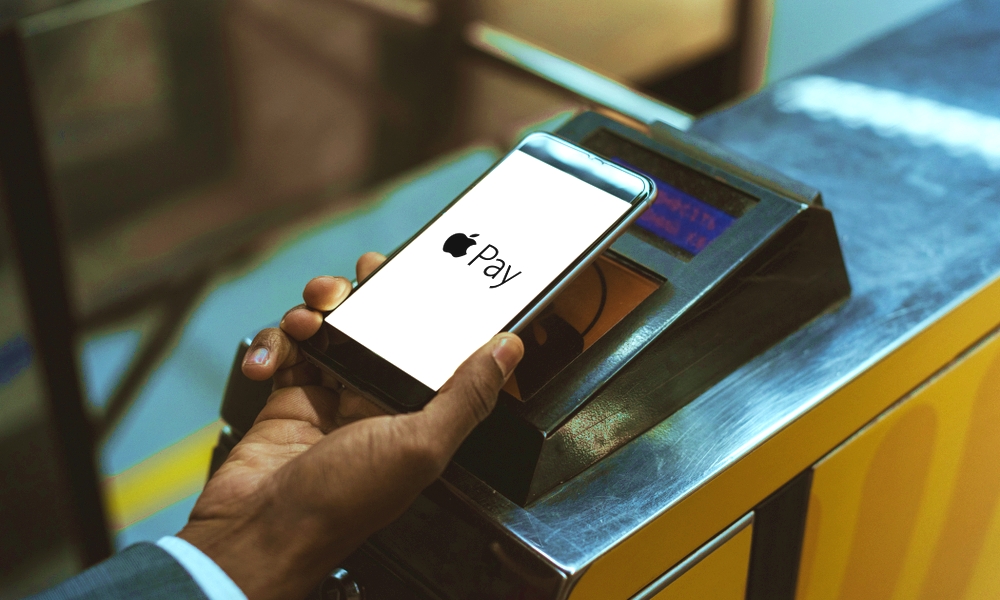iOS 12.3 Could Make Paying for Transit With Apple Pay Even Easier
 Credit: LightField Studios / Shutterstock
Credit: LightField Studios / Shutterstock
Toggle Dark Mode
While contactless payments are great for traditional retail stores, one of the areas where Apple Pay really has the potential to shine is with NFC transit payment terminals. After all, tapping an iPhone — or better yet, an Apple Watch — against a fare card reader on a public bus or subway station can be a much more efficient way to travel. When it’s implemented properly, that is.
Sadly, as fast as Apple Pay has been rolling out in the retail world, Apple has been considerably slower to introduce the technology specifically to mass transit. While it’s worked fine all along for most systems that can just draw fares from normal tap-payment credit and debit cards, like Transport for London in the U.K., most transit agencies complicate matters by using prepaid fare cards, which require more specific hardware and software support.
Some, like Vancouver’s TransLink, have been adding Apple Pay support simply by installing standard NFC payment terminals, however even in these cases, users still need to authenticate transactions, making the experience somewhat more cumbersome than simply using a physical fare card or credit card; iPhone users need to rely on Touch ID, or even more awkwardly, Face ID, before they can tap against the reader, and even Apple Watch users have to double-tap the side button to bring up their payment card and place the device into payment mode.
Apple famously added support for Japan’s proprietary FeliCa payment system when it brought Apple Pay to Japan in 2016, but following that high-profile deployment, things remained fairly quiet with Apple Pay and mass transit support for the next couple of years. In fact, it wasn’t until last spring that we saw another big expansion of the feature, adding Beijing and Shanghai in iOS 11.3, and more recently, Apple announced that it will be coming to Singapore and several major U.S. transit systems, including Portland, Chicago, and New York City.
Express Transit
However, in rolling out Apple Pay transit for China, Apple also introduced a magical new feature in iOS 12: Express Transit. With Express Transit, users no longer need to do anything with their iPhone or Apple Watch to pay a transit fare — they can simply tap against a compatible reader and have the transaction automatically go through. Further, Express Transit has another extremely useful trick up its sleeve — users with an iPhone XS-series or iPhone XR can take advantage of a power reserve mode that will allow the transit cards to be used for up to five hours, even after the iPhone battery is otherwise dead (oddly, the Apple Watch doesn’t support this feature, even though it has its own power reserve mode already).
While Express Transit is an awesome feature, there’s a catch: Right now it only works with specific prepaid, or “stored value” fare cards. This means that users in places like London and Vancouver, where payments are collected from normal EMV credit/debit cards, can’t take advantage of the feature and still have to handle their transit fare payments as they would with any retail store terminal.
However it looks like this may be set to change, if new code in iOS 12.3 is any indication. Discovered by TapDownUnder, Apple seems to be baking in support for using EMV cards with the same Express Pay capabilities at transit terminals, while ensuring that all other transactions remain secure. According to the report, a new “Transit Network Identifier” would be associated with normal Apple Pay card profiles and read from legitimate transit agency terminals, allowing an iPhone running iOS 12.3 (and presumably an Apple Watch with watchOS 5.4) to make transit payments without the need to authenticate first.
While it’s unclear what would be required to set up and deploy this on transit terminals — it sounds like some involvement will be required from both payment card providers and transit agencies — the design would be intended to ensure that unauthenticated fare payments can only be made at legitimate transit payment stations; even a $1 transaction at a traditional NFC terminal would still require the normal Apple Pay authentication rules to be followed.
Ultimately, though, it’s great to see Apple finally getting serious about bringing Apple Pay support to a wider range of transit agencies around the world, and with rumours of expanded NFC support in iOS 13, we’ll likely also see third-party app developers now able to fill in any gaps that Apple itself doesn’t cover.
[The information provided in this article has NOT been confirmed by Apple and may be speculation. Provided details may not be factual. Take all rumors, tech or otherwise, with a grain of salt.]






